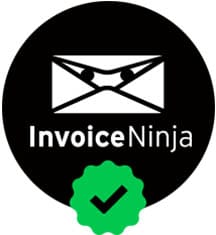How To Install Invoice Ninja on Ubuntu 24.04 LTS

Invoice Ninja is a powerful open-source invoicing and billing platform that offers freelancers and small to medium-sized businesses an efficient way to manage their finances. With its user-friendly interface and extensive features, Invoice Ninja simplifies the process of creating and sending invoices, tracking expenses, and accepting payments. By installing Invoice Ninja on the latest Ubuntu 24.04 LTS, users can take advantage of enhanced security features and improved performance, ensuring a seamless and reliable invoicing experience.
Prerequisites
Before proceeding with the installation of Invoice Ninja on Ubuntu 24.04 LTS, ensure that your system meets the following requirements:
- A server or virtual machine running Ubuntu 24.04 LTS
- Minimum 512 MB RAM (1 GB or more recommended)
- A valid domain name pointing to your server’s IP address
- SSH access to your server with root or sudo privileges
Additionally, you will need to install the following software:
- Apache or Nginx web server
- PHP 8.3 with required extensions
- MariaDB or MySQL database server
Step 1: Update System Packages
Before installing any software, it’s crucial to update your system packages to ensure you have the latest security patches and bug fixes. Open your terminal and run the following commands:
sudo apt update
sudo apt upgradeThese commands will fetch the latest package lists from the repositories and upgrade any outdated packages to their latest versions. Keeping your system up to date is essential for maintaining security and optimal performance.
Step 2: Install Apache/Nginx and PHP
Invoice Ninja requires a web server to run, and you can choose between Apache and Nginx. For this guide, we’ll use Apache. Install Apache by running:
sudo apt install apache2Next, install PHP 8.3 and the necessary extensions:
sudo apt install php8.3 libapache3-mod-php8.3 php8.3-mysql php8.3-curl php8.3-gd php8.3-mbstring php8.3-xml php8.3-zipTo optimize PHP performance, you can modify the php.ini file and adjust settings such as memory_limit and upload_max_filesize according to your needs.
Step 3: Configure MariaDB/MySQL
Invoice Ninja stores its data in a database, and you can use either MariaDB or MySQL. Install MariaDB with the following command:
sudo apt install mariadb-serverAfter installation, secure your MariaDB server by running the security script:
sudo mysql_secure_installationFollow the prompts to set a strong root password, remove anonymous users, disable remote root login, and remove the test database. These steps are crucial for securing your database server.
Next, log in to the MariaDB shell and create a database and user for Invoice Ninja:
sudo mysql -u root -pCREATE DATABASE invoice_ninja;
CREATE USER 'ninja_user'@'localhost' IDENTIFIED BY 'your_strong_password';
GRANT ALL PRIVILEGES ON invoice_ninja.* TO 'ninja_user'@'localhost';
FLUSH PRIVILEGES;
EXIT;Replace your_strong_password with a secure password for your Invoice Ninja database user.
Step 4: Download and Install Invoice Ninja
Download the latest version of Invoice Ninja from the official website:
wget https://download.invoiceninja.com/ninja-v5.5.76.zipExtract the downloaded package to your web server’s document root directory:
sudo unzip ninja-v5.5.76.zip -d /var/www/html/invoice-ninjaSet the appropriate ownership and permissions for the extracted files:
sudo chown -R www-data:www-data /var/www/html/invoice-ninja
sudo chmod -R 755 /var/www/html/invoice-ninja/storageProper file ownership and permissions are essential for ensuring the security of your Invoice Ninja installation.
Step 5: Configure Web Server for Invoice Ninja
Create an Apache virtual host configuration file for Invoice Ninja:
sudo nano /etc/apache2/sites-available/invoice-ninja.confAdd the following configuration:
<VirtualHost *:80>
ServerName your_domain.com
ServerAlias www.your_domain.com
DocumentRoot /var/www/html/invoice-ninja/public
<Directory /var/www/html/invoice-ninja/public>
AllowOverride All
Require all granted
</Directory>
ErrorLog ${APACHE_LOG_DIR}/invoice-ninja.error.log
CustomLog ${APACHE_LOG_DIR}/invoice-ninja.access.log combined
</VirtualHost>Replace your_domain.com with your actual domain name. Save the file and exit the editor.
Enable the Invoice Ninja virtual host and the Apache rewrite module:
sudo a2ensite invoice-ninja.conf
sudo a2enmod rewrite
sudo systemctl restart apache2Step 6: Secure Invoice Ninja with SSL
To ensure secure transactions and protect sensitive data, it’s crucial to enable SSL for your Invoice Ninja installation. Install the Certbot client and obtain a free SSL certificate from Let’s Encrypt:
sudo apt install certbot python3-certbot-apache
sudo certbot --apache -d your_domain.com -d www.your_domain.comFollow the prompts to provide an email address and agree to the Let’s Encrypt terms of service. Certbot will automatically configure your Apache virtual host to use the SSL certificate.
To redirect HTTP traffic to HTTPS, modify your Invoice Ninja virtual host configuration:
sudo nano /etc/apache2/sites-available/invoice-ninja.confAdd the following lines before the closing </VirtualHost> tag:
RewriteEngine On
RewriteCond %{HTTPS} off
RewriteRule ^(.*)$ https://%{HTTP_HOST}%{REQUEST_URI} [L,R=301]Save the file, exit the editor, and restart Apache:
sudo systemctl restart apache2Step 7: Complete Invoice Ninja Setup
Open your web browser and navigate to your Invoice Ninja installation URL (e.g., https://your_domain.com). You will be redirected to the setup wizard.
Follow these steps to complete the setup:
- Select your language and click “Next.”
- Enter your database connection details (host, database name, username, and password) and click “Next.”
- Create an admin account by providing your email address and a strong password.
- Configure your company details, including name, address, and logo.
- Choose your preferred currency and tax settings.
- Review the installation summary and click “Finish.”
Congratulations! You have successfully installed InvoiceNinja. Thanks for using this tutorial for installing Invoice Ninja on your Ubuntu 24.04 LTS system. For additional help or useful information, we recommend you check the official Invoice Ninja website.